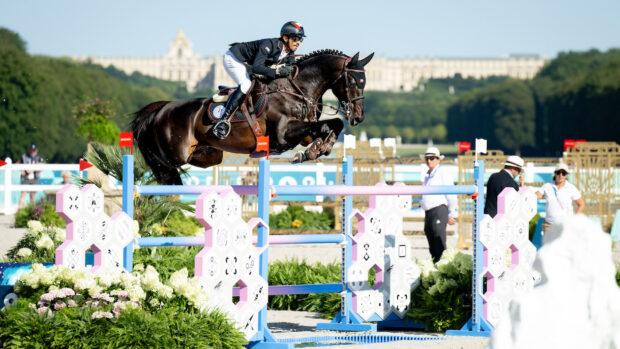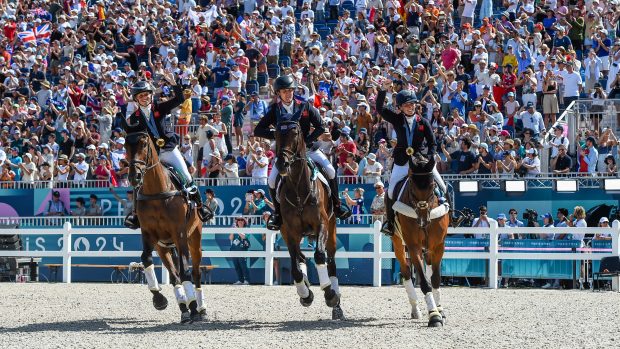Giving horses the best start in life is the key to success. Graham Fletcher explains why he believes that the traditional methods are still the most reliable
I have produced young horses all my life, either horses I have bred, or those which havecome unbroken or just been sat on.In common with any professional rider who is often away at shows, I am rarely in a position to give youngsters either the time or continuity of work they require. This is why the majority of my horses have been brokenin by other people, notably Dave Lee.
Based in Thirsk, North Yorks, 60-year-old Dave has been breaking horses since he was 16. At least 20 horses he has had from me have gone on jump in Wembley finals.
Dave’s methods, may seem a bit old-fashioned to the followers of the new generation of experts. I am sure Monty Roberts has a way with horses, but getting on a horse is one thing – making a mouth and mannering it properly is quite another. When a horse has a good mouth, he is compliant and controllable, and therefore easier to ride. He gives even the novice rider more chances to get things right.
Opinions vary as to how long it takes to break a horse, a decision I usually leave to Dave. But from first coming in and being mouthed to riding away would be at least eight weeks.
The early years
Ideally, every horse should be “swung” – taught to be tied-up and led about – as soon as he is weaned. They need to be fastened to something strong with the rope short enough so they cannot get their legs caught.
At this age, the more handling, grooming and spending time with a young horse, the better. If I am having a conversation with someone in the yard, I lean on the horse¨s door. Even a nervous individual will soon come over to investigate.
Those we have bred are left to run loose on good grazing. Obviously they need feeding, and if someone has time to play about with them, pick up their feet, get them used to wearing rugs and so on, so much the better. I never loose jump two-year-olds.
Dave breaks the three-year-olds over the summer and rides them away; then after Christmas, at the beginning of their four-year-old year, I take over, do a few novice shows and perhaps the occasional day’s hunting.
Mouthing
Mouthing takes at least two weeks. We use a straight bar with keys – it gives the horse something to play with. He has it on in the box for half and hour or so at a time, and we keep giving him a bit of food or hay to keep the mouth wet.
Introducing the roller
We never use a roller without a breastplate, in case it slips back. It is done up very gradually. Staying on for several days and nights over a period of a week or so, the roller comes off twice a day and is moved forward. It is also important to check for sores. Right from the start in the stable, we teach the horse voice commands which help when we move outside to lunge. This usually takes two to four weeks. Dave likes to begin making the horse¨s mouth at this stage, quietly touching one side, then the other.
Long reining
Introducing the saddle is when you find out if you have done a good job with the roller. We always drive horses with two lines through the stirrups which are fastened underneath. This usually takes between three and six weeks.
Again, we start in a large stable, putting the horse into the corner and letting him feel the lines round his backside. Then we go from one side of the box to the other.
Later, we drive in an enclosed yard, then a small paddock ¨ but never letting him get away.
After a couple of weeks, we may go down the quiet lanes, and later stand at the road end and watch the traffic. Dave will often sit on a wall for 10mins and let the horse take it all in.We never use a whip, just the lines to send him forward.
After a couple of weeks, Dave goes out driving for 2 or 3 miles around the lanes every evening.
Backing
When the horse is driving well and calmly wearing the saddle, we can begin backing him.
With someone holding his head, the rider is legged up and gently lies across his back. He walks round a large stable with plenty of headroom a few timeslike this before the rider quietly sits up on top and gives him a pat. The process is repeated several times during the session.
Once the horse is confident being ridden round the stable, we move outside – still with someone at his head. If the groundwork has been done properly in an enclosed area, this should not prove a problem.
Horses like clear instructions, so we give the aids positively but kindly, backed up with the voice commands he learnt on the lunge.
Breaking tips
- Be firm but kind the horse should never be stressed. The idea is not to fall out with him.
- We like horses to be stabled while working on them. It gets them used to you being around, being handled, tiedup, standing still to be groomed. It is all about making horses, not breaking them.
- Work young horses twice a day for 30mins at a time, rather than once a day for an hour. They learn by repetition and cannot concentrate for too long.
- Horses must get out and see things. Breaking them inside is not worth a light.
- Once a good mouth is made, leave it alone – it has to last him a lifetime.


